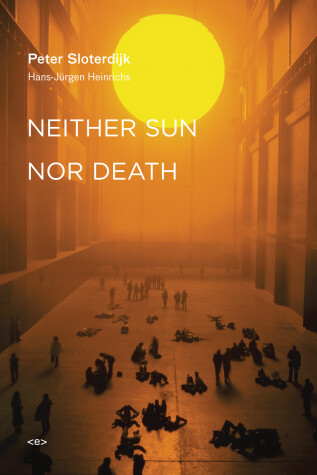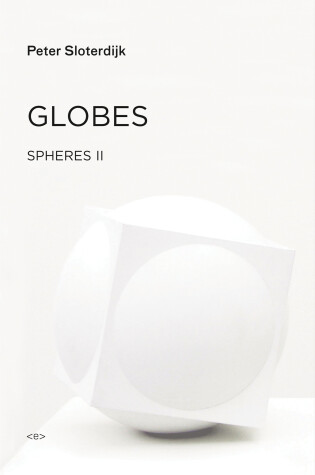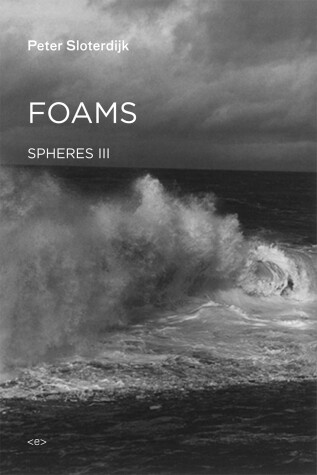Semiotext(e) / Foreign Agents
5 total works
Peter Sloterdijk first became known in this country for his late 1980s Critique of Cynical Reason, which confronted headlong the “enlightened false consciousness” of Habermasian critical theory. Two decades later, after spending seven years in India studying Eastern philosophy, he is now attracting renewed interest for his writings on politics and globalization and for his magnum opus Spheres, a three-volume archaeology of the human attempt to dwell within spaces, from womb to globe: Bubbles, 1998; Globes, 1999; Foam, 2004, all forthcoming from Semiotext(e). In Neither Sun nor Death, Sloterdijk answers questions posed by German writer Hans-Jürgen Heinrichs, commenting on such issues as technological mutation, development media, communication technologies, and his own intellectual itinerary. Iconoclastic and provocative, alternatively sparkling and bombastic, a child of '68 and a libertarian, Sloterdijk is the most exciting and controversial German philosopher to appear on the world scene since Nietzsche and Heidegger. Like Nietzsche, Sloterdijk remains convinced that contemporary philosophers have to think dangerously and let themselves be “kidnapped” by contemporary “hypercomplexities”; they must forsake our present humanist and nationalist world for a wider horizon at once ecological and global. Neither Sun nor Death is the best introduction available to Sloterdijk's philosophical theory of globalization. It reveals a philosophe extraordinaire, encyclopedic and provocative, as much at ease with current French Theory (Gilles Deleuze, Paul Virilio, Gabriel Tarde) as with Heidegger and Indian mystic Osho Rajneesh.
The second, and longest, volume in Peter Sloterdijk's celebrated Spheres trilogy, on the world history and philosophy of globalization.
All history is the history of struggles for spheric expansion.
-from Globes
In Globes-the second, and longest, volume in Peter Sloterdijk's celebrated magnum opus Spheres trilogy-the author attempts nothing less than to uncover the philosophical foundations of the political history-the history of humanity-of the last two thousand years. The first, well-received volume of the author's Spheres trilogy, Bubbles, dealt with microspheres: the fact that individuals, from the fetal stage to childhood, are never alone, because they always incorporate the Other into themselves and align themselves with it. With Globes, Sloterdijk opens up a history of the political world using the morphological models of the orb and the globe, and argues that all previous statements about globalization have suffered from shortsightedness. For him, globalization begins with the ancient Greeks, who represented the whole world through the shape of the orb. With the discovery of America and the first circumnavigations of the earth, the orb was replaced by the globe. This second globalization is currently giving way to the third, which we are living through today, as the general virtuality of all conditions leads to a growing spatial crisis.
Peter Sloterdijk tells here the true story of globalization: from the geometrization of the sky in Plato and Aristotle to the circumnavigation of the last orb-the earth-by ships, capital, and signals.
The final volume in Peter Sloterdijk's celebrated Spheres trilogy, on the phenomenology of community and its spatial peripheries.
"So the One Orb has imploded-now the foams are alive."
-from Foams
Foams completes Peter Sloterdijk's celebrated Spheres trilogy: his 2,500-page "grand narrative" retelling of the history of humanity, as related through the anthropological concept of the "Sphere." For Sloterdijk, life is a matter of form and, in life, sphere formation and thought are two different labels for the same thing. The trilogy also offers his corrective answer to Martin Heidegger's Being and Time, reformulating it into a lengthy meditation on Being and Space-a shifting of the question of who we are to a more fundamental question of where we are.
In this final volume, Sloterdijk's "plural spherology" moves from the historical perspective on humanity of the preceding two volumes to a philosophical theory of our contemporary era, offering a view of life through a multifocal lens. If Bubbles was Sloterdijk's phenomenology of intimacy, and Globes his phenomenology of globalization, Foams could be described as his phenomenology of spatial plurality: how the bubbles that we form in our duality bind together to form what sociological tradition calls "society." Foams is an exploration of capsules, islands, and hothouses that leads to the discovery of the foam city.
The Spheres trilogy ultimately presents a theology without a God-a spatial theology that requires no God, whose death therefore need not be of concern.
As with the two preceding volumes, Foams can be read on its own or in relation to the rest of the trilogy.
An epic project in both size and purview, Peter Sloterdijk's three-volume, 2,500-page Spheres is the late-twentieth-century bookend to Heidegger's Being and Time. Rejecting the century's predominant philosophical focus on temporality, Sloterdijk, a self-described “student of the air,” reinterprets the history of Western metaphysics as an inherently spatial and immunological project, from the discovery of self (bubble) to the exploration of world (globe) to the poetics of plurality (foam). Exploring macro- and micro-space from the Greek agora to the contemporary urban apartment, Sloterdijk is able to synthesize, with immense erudition, the spatial theories of Aristotle, René Descartes, Gaston Bachelard, Walter Benjamin, and Georges Bataille into a morphology of shared, or multipolar, dwelling—identifying the question of being as one bound up with the aerial technology of architectonics and anthropogenesis.
Sloterdijk describes Bubbles, the first volume of Spheres, as a general theory of the structures that allow couplings—or as the book's original intended subtitle put it, an “archeology of the intimate.” Bubbles includes a wide array of images, not to illustrate Sloterdijk's discourse, but to offer a spatial and visual “parallel narrative” to his exploration of bubbles.
Written over the course of a decade, the Spheres trilogy has waited another decade for its much-anticipated English translation from Semiotext(e). Volumes II, Globes, and III, Foam, will be published in the coming seasons.




